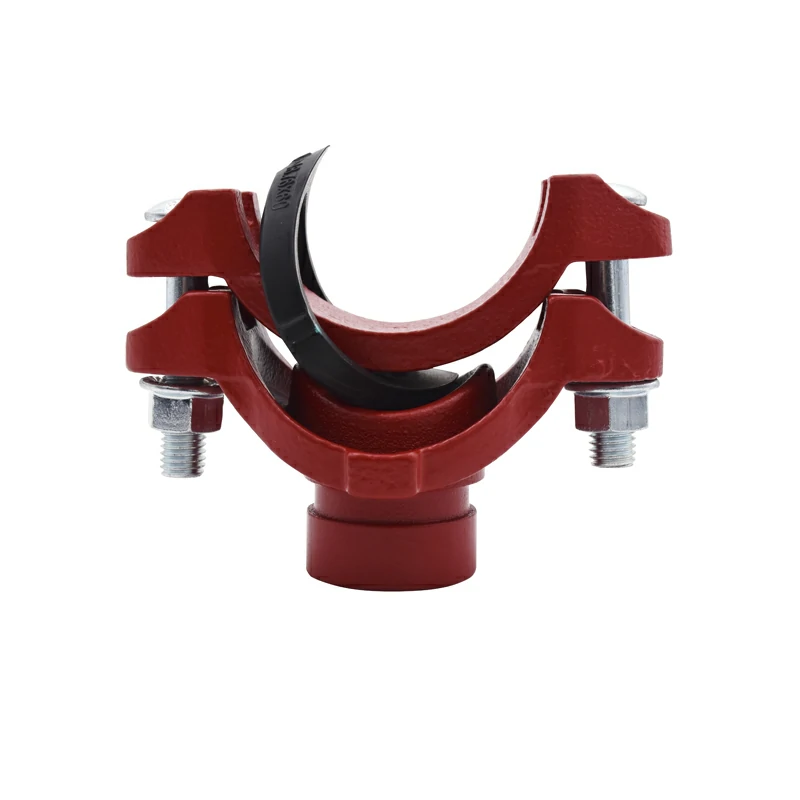Posted on December 26, 2023
Learn all about grooved mechanical tee: Functions, Uses, and Benefits
The grooved mechanical tee is a specialized fitting used in piping systems to create branch connections. It offers several functions, uses, and benefits that make it popular in various industries. In this explanation, we’ll explore the key aspects of grooved mechanical tees.
What is a Grooved Mechanical Tee?
A grooved mechanical tee is a pipe fitting designed with grooved ends that allow for quick and efficient installation. It consists of three connection points: a mainline end, an outlet end, and a branch end. The mainline end connects to the primary pipe, while the outlet end provides a connection for a secondary pipe. The branch end allows for the attachment of a third pipe, creating a branch connection.
Functions of Grooved Mechanical Tees:
Branch Connections: The primary function of a grooved mechanical tee is to create branch connections in a piping system. It enables the addition of new pipelines without the need for complex cutting, welding, or threading processes. This makes it ideal for applications where branch connections need to be made quickly and easily.
Uses of Grooved Mechanical Tees:
Grooved mechanical tees find applications in various industries and systems, including:
Fire Protection Systems: Grooved mechanical tees are commonly used in fire protection systems to create branch connections for sprinkler systems, standpipes, and other fire suppression equipment. They allow for the rapid installation and expansion of the fire protection network.
HVAC Systems: In heating, ventilation, and air conditioning (HVAC) systems, grooved mechanical tees are employed to create branch connections for chilled water, hot water, and other fluid distribution lines. They simplify the installation and maintenance of HVAC piping systems.
Process Piping: Grooved mechanical tees are used in process piping applications, such as in industrial plants, refineries, and manufacturing facilities. They enable the creation of branch connections for the transport of various liquids, gases, and chemicals.
Water and Wastewater Systems: These tees are utilized in water supply and wastewater systems to create branch connections for distribution and collection pipelines. They facilitate the efficient installation and expansion of municipal, commercial, and residential water networks.
Mining and Oil & Gas Industries: Grooved mechanical tees are employed in mining and oil & gas industries for branch connections in pipelines used for transporting fluids, such as water, oil, and gas.

Benefits of Grooved Mechanical Tees:
Ease of Installation: Grooved mechanical tees allow for quick and straightforward installation. The grooved ends eliminate the need for welding, threading, or flanging, reducing labor time and costs.
Modularity and Flexibility: These tees offer flexibility in system design and modifications. They can be easily disassembled and reassembled, allowing for system expansion, reconfiguration, or relocation.
Reliability and Leak Resistance: The grooved coupling system provides a secure and leak-resistant joint. When properly installed, it offers excellent resistance to internal and external pressures, ensuring system integrity.
Vibration and Noise Reduction: Grooved mechanical tees absorb and dampen vibrations and noise generated by fluid flow, resulting in quieter and more stable operation of the piping system.
Maintenance and Repairs: The modular design of grooved mechanical tees simplifies maintenance and repairs. If necessary, the tee can be easily replaced or removed for inspection or maintenance purposes without disrupting the entire system.
It’s important to note that the specific design, size, and materials of grooved mechanical tees may vary depending on the manufacturer and application requirements. Always refer to the manufacturer’s guidelines and industry standards when selecting and installing grooved mechanical tees in a piping system.
By understanding the functions, uses, and benefits of grooved mechanical tees, you can make informed decisions when incorporating them into your piping systems.

